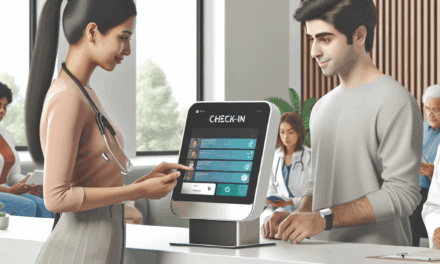New Cyber Threat Sharing Network for Healthcare Unveiled and Additional Updates
The healthcare sector has increasingly become a prime target for cybercriminals, with data breaches and ransomware attacks on the rise. In response to this growing threat, a new cyber threat sharing network has been unveiled, aimed specifically at enhancing the cybersecurity posture of healthcare organizations. This article delves into the details of this new initiative, its implications for the healthcare industry, and additional updates on cybersecurity trends and challenges facing the sector.
Understanding the New Cyber Threat Sharing Network
The newly launched cyber threat sharing network for healthcare is designed to facilitate real-time information exchange among healthcare organizations, government agencies, and cybersecurity experts. This initiative aims to create a collaborative environment where stakeholders can share insights, threat intelligence, and best practices to combat cyber threats more effectively.
One of the primary motivations behind this network is the alarming increase in cyberattacks targeting healthcare systems. According to a report by the Identity Theft Resource Center, healthcare data breaches accounted for 25% of all data breaches in 2022, affecting millions of patients and compromising sensitive information.
Key Features of the Network
- Real-Time Threat Intelligence: The network provides a platform for organizations to share real-time threat intelligence, enabling them to respond swiftly to emerging threats.
- Collaboration with Law Enforcement: The initiative fosters collaboration between healthcare organizations and law enforcement agencies, ensuring that cybercriminals are held accountable.
- Training and Resources: Participants in the network will have access to training programs and resources to enhance their cybersecurity capabilities.
- Incident Response Support: The network offers support for incident response, helping organizations to mitigate the impact of cyberattacks.
- Data Analytics: Advanced data analytics tools will be employed to identify patterns and trends in cyber threats, allowing for proactive measures.
This network is a significant step forward in addressing the cybersecurity challenges faced by the healthcare sector. By fostering collaboration and information sharing, it aims to create a more resilient healthcare ecosystem.
The Importance of Cybersecurity in Healthcare
Cybersecurity in healthcare is not just a technical issue; it is a matter of patient safety and trust. The sensitive nature of healthcare data makes it a lucrative target for cybercriminals. A successful cyberattack can lead to severe consequences, including financial losses, reputational damage, and compromised patient care.
Impact of Cyberattacks on Patient Care
Cyberattacks can disrupt healthcare operations, leading to delays in patient care and treatment. For instance, the 2020 ransomware attack on Universal Health Services (UHS) forced the organization to divert patients and shut down systems, impacting thousands of patients across the country. Such incidents highlight the critical need for robust cybersecurity measures in healthcare.
Financial Implications
The financial impact of cyberattacks on healthcare organizations can be staggering. According to a report by the Ponemon Institute, the average cost of a data breach in the healthcare sector was $9.23 million in 2021. This figure includes costs related to legal fees, regulatory fines, and loss of business. The financial burden can be particularly challenging for smaller healthcare providers, which may lack the resources to recover from such incidents.
Regulatory Compliance
Healthcare organizations are subject to various regulations, including the Health Insurance Portability and Accountability Act (HIPAA) in the United States. Non-compliance with these regulations can result in hefty fines and legal repercussions. Cybersecurity is a critical component of regulatory compliance, and organizations must implement adequate measures to protect patient data.
Building Patient Trust
Patients expect their healthcare providers to safeguard their personal information. A breach of trust can lead to patients hesitating to share sensitive information, ultimately affecting their care. By prioritizing cybersecurity, healthcare organizations can build and maintain trust with their patients.
Case Studies of Cyberattacks in Healthcare
Several high-profile cyberattacks have underscored the vulnerabilities in the healthcare sector. For example, the 2017 WannaCry ransomware attack affected over 200,000 computers across 150 countries, including the UK’s National Health Service (NHS). The attack led to the cancellation of thousands of appointments and significant disruption to patient care.
Another notable case is the 2021 attack on the Colonial Pipeline, which, while not a healthcare organization, had far-reaching implications for the healthcare supply chain. The attack highlighted the interconnectedness of various sectors and the potential ripple effects of cyber incidents.
Challenges in Implementing Cybersecurity Measures
Despite the growing awareness of cybersecurity threats, many healthcare organizations face significant challenges in implementing effective cybersecurity measures. These challenges can hinder their ability to protect sensitive patient data and respond to cyber threats.
Lack of Resources
Many healthcare organizations, particularly smaller providers, struggle with limited budgets and resources for cybersecurity. According to a survey by the Healthcare Information and Management Systems Society (HIMSS), 60% of healthcare organizations reported that they do not have sufficient resources to address cybersecurity threats effectively. This lack of resources can lead to inadequate security measures and increased vulnerability to attacks.
Complexity of Healthcare IT Systems
The healthcare sector relies on a complex array of IT systems, including electronic health records (EHRs), medical devices, and billing systems. This complexity can create challenges in securing all components of the IT infrastructure. For instance, many medical devices are not designed with cybersecurity in mind, making them potential entry points for cybercriminals.
Staff Training and Awareness
Human error is a significant factor in many cyber incidents. A lack of training and awareness among staff can lead to vulnerabilities, such as falling victim to phishing attacks. According to a report by Verizon, 32% of data breaches in healthcare were caused by human error. Organizations must prioritize training and awareness programs to equip staff with the knowledge to recognize and respond to cyber threats.
Regulatory Compliance Challenges
Healthcare organizations must navigate a complex landscape of regulations related to data protection and privacy. Compliance with these regulations can be challenging, particularly for organizations that lack dedicated compliance teams. Failure to comply can result in significant fines and reputational damage.
Emerging Threats and Evolving Tactics
The cyber threat landscape is constantly evolving, with cybercriminals employing increasingly sophisticated tactics. For example, the rise of ransomware-as-a-service has made it easier for less technically skilled criminals to launch attacks. Healthcare organizations must stay informed about emerging threats and adapt their cybersecurity strategies accordingly.
Best Practices for Enhancing Cybersecurity in Healthcare
To mitigate the risks associated with cyber threats, healthcare organizations must adopt best practices for enhancing their cybersecurity posture. These practices can help organizations protect sensitive patient data and respond effectively to incidents.
Implementing a Robust Cybersecurity Framework
Organizations should adopt a comprehensive cybersecurity framework that outlines policies, procedures, and controls for protecting sensitive data. Frameworks such as the NIST Cybersecurity Framework provide a structured approach to managing cybersecurity risks. Key components of a robust framework include:
- Risk Assessment: Regularly assess risks to identify vulnerabilities and prioritize mitigation efforts.
- Access Controls: Implement strict access controls to limit who can access sensitive data and systems.
- Incident Response Plan: Develop and regularly update an incident response plan to ensure a swift and effective response to cyber incidents.
- Data Encryption: Use encryption to protect sensitive data both at rest and in transit.
- Regular Audits: Conduct regular audits and assessments to ensure compliance with security policies and regulations.
Investing in Staff Training and Awareness
Organizations must prioritize training and awareness programs to educate staff about cybersecurity risks and best practices. Training should cover topics such as:
- Recognizing phishing attempts and social engineering tactics.
- Safe handling of sensitive data.
- Reporting suspicious activities or incidents.
- Understanding the importance of strong passwords and multi-factor authentication.
Regular training sessions and simulated phishing exercises can help reinforce these concepts and improve staff awareness.
Collaboration and Information Sharing
Participating in information-sharing networks, such as the newly unveiled cyber threat sharing network, can enhance an organization’s ability to respond to cyber threats. Collaboration with other healthcare organizations, government agencies, and cybersecurity experts can provide valuable insights and resources. Key benefits of collaboration include:
- Access to real-time threat intelligence.
- Opportunities for joint training and exercises.
- Shared resources for incident response and recovery.
- Collective advocacy for improved cybersecurity policies and regulations.
Regularly Updating Technology and Systems
Healthcare organizations must ensure that their technology and systems are regularly updated to protect against known vulnerabilities. This includes:
- Applying security patches and updates promptly.
- Upgrading outdated systems and software.
- Implementing advanced security solutions, such as intrusion detection systems and endpoint protection.
- Conducting regular vulnerability assessments and penetration testing.
By staying current with technology and security measures, organizations can reduce their risk of cyberattacks.
Engaging with Cybersecurity Experts
Healthcare organizations should consider engaging with cybersecurity experts to assess their security posture and develop tailored strategies for improvement. Cybersecurity consultants can provide valuable insights into best practices, emerging threats, and compliance requirements. Additionally, organizations may benefit from:
- Conducting tabletop exercises to simulate cyber incidents and test response plans.
- Participating in industry conferences and workshops to stay informed about the latest trends and technologies.
- Collaborating with academic institutions for research and development of innovative cybersecurity solutions.
Conclusion: A Call to Action for Healthcare Organizations
The unveiling of the new cyber threat sharing network for healthcare marks a significant step forward in addressing the cybersecurity challenges facing the sector. As cyber threats continue to evolve, healthcare organizations must prioritize cybersecurity to protect sensitive patient data and ensure the continuity of care.
By implementing best practices, investing in staff training, and collaborating with other organizations, healthcare providers can enhance their cybersecurity posture and mitigate the risks associated with cyberattacks. The time for action is now; the safety of patients and the integrity of healthcare systems depend on it.
In summary, the healthcare sector must embrace a proactive approach to cybersecurity, leveraging collaboration, technology, and expertise to build a more resilient future. The new cyber threat sharing network is a vital resource in this endeavor, providing the tools and support needed to combat the ever-growing threat of cybercrime.





